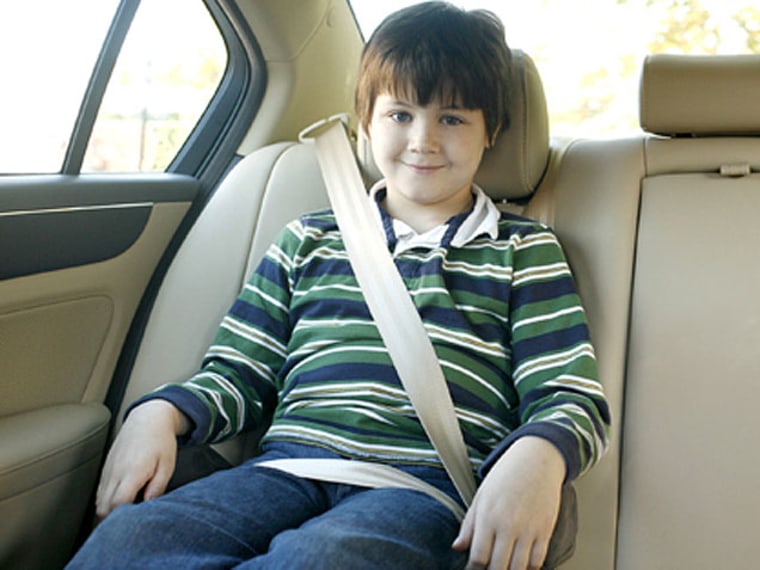When did you move your child up to a booster seat? A new review from Consumer Reports finds that many parents are making the switch from a car seat to a booster seat too early—thanks to listed weight minimums that don't match up to the recommended ages. And moving your child too early can put them at extra risk for injury in the event of a car accident.
According to the review, 28 of the 34 seats they looked at give a minimum weight of 30 to 33 pounds. Mapping to growth charts finds that the average 30-pound child is about 2 1/2 years old—too young for a booster, where the child uses the vehicle's shoulder and lap belt as their restraint. Even scarier: a big 15-month-old in the 95th percentile for weight can easily be 30 pounds, but that's way too young to ride in a car restraint without harnesses.
When should parents make the jump to a booster? "Don't rush to 'graduate' your child from their 5-point-harness into a booster seat," says Alisa Baer, MD, a pediatrician in New York City known as the Car Seat Lady. "Before you let your child ride in a booster, make sure they are, ideally, at least 4 years old AND at least 40 pounds AND—perhaps most importantly—mature enough to sit properly in the booster for the entire trip. That means no squirming, slouching or leaning over."
A version of this story originally appeared on iVillage.
